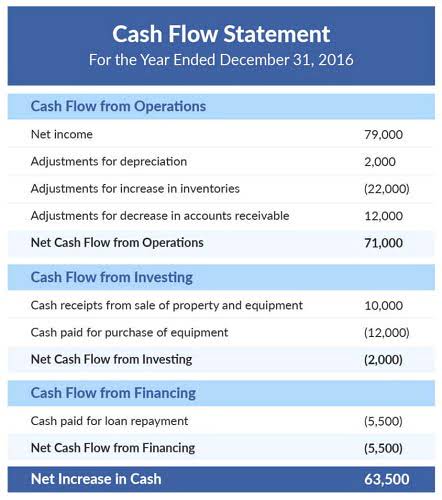Content

Consider a situation wherein a farmer takes a short position in 10 rice futures contracts. It is done in order to hedge against the trend of falling commodity prices in the current markets. When compared to historical cost accounting, mark to market can present a more accurate representation of the value of the assets held by that company or institution. For example, mark to market accounting could have prevented theSavings and Loan Crisis.
What does mark-to-market mean in accounting?
What Is Mark to Market (MTM)? Mark to market (MTM) is a method of measuring the fair value of accounts that can fluctuate over time, such as assets and liabilities. Mark to market aims to provide a realistic appraisal of an institution's or company's current financial situation based on current market conditions.
Those who heap blame on the head of fair value accounting like to imply that financial institutions saw a majority of their assets marked to the deteriorating market. In fact, according to an SEC study in late 2008, only 31% of bank assets were treated in this fashion, and the rest were accounted for at historical cost. For instance, if a company had purchased https://www.bookstime.com/ a real estate property for $1,000,000 many years ago worth $10,000,000 today, it will report its current market price at $10,000,000 on its balance sheet. The gains and losses that occur due to changes in the market value of assets that are classified as available for trading are reported on the income statement as unrealized losses or gains.
FAS 115
By the way, on this blog, I focus on topics related to starting a business, business contracts, and investing, making money geared to beginners, entrepreneurs, business owners, or anyone eager to learn. There may be more reasons why companies may want to record the actual value of an account on their books and what I present here is just a few use cases.

Let’s look at a mark to market accounting example to clarify this further. In essence, the financial service company will reduce the value of its loans by the value of its bad debt allowance. There are many reasons why various parties may need to get a mark to market report or perform such operations. Attach to your tax return a statement, using the same format as line 10, showing the details of each transaction .
How to Calculate Mark to Market
The mark to market process is used to give the readers of an organization’s financial statements the most current view of the entity’s asset and liability valuations. However, this process can give readers a pessimistic view of a firm’s financial situation if there is a sudden downturn in asset values at month-end, from which market prices subsequently recover. Market to market accounting, which also is often called fair value accounting, represents standard practice within much of the financial services industry. The firm’s balance sheet reflects the current market value of assets and liabilities. Likewise, daily changes in the market valuation of assets and liabilities are immediately recognized in the firm’s income statement. In mark to market accounts, the assets are valued at the current market price, i.e. the value receivable if it is sold on the balance sheet’s date. But the original value remains constant and will not be subject to change unless permitted by law.
The major goal of Mark to market is to give a reliable report on a company’s financial status based on the current price of the assets and liabilities they hold. With respect to liabilities, in the third quarter of 2011 new mark to market accounting rules came into effect that can result in the revaluation of the firm’s debt, based on the current market prices thereof. For example, if the market value of a firm’s debt falls, either due to declining prospects for the firm or because of a general rise in market interest rates, the value of such debt may be decreased on the balance sheet, boosting income and retained earnings. The classic application of the mark to market accounting applies to the activities of securities traders. At the end of each trading day, the firm’s controllers value the securities held in trading desk inventories at their closing market prices. A net increase in value versus the prior trading day is a gain that is recognized immediately in the income statement, and which thus also increases retained earnings. Likewise, a net decrease in value from the prior day is reflected immediately as a loss that flows into the income statement, and which decreases the firm’s retained earnings.
Mark to Market (MTM)
In accounting terms, the mark to market value is the amount that you can get in the market if you were to sell the asset today or at a specific point in time. Therefore, if you had a substantial loss, you may deduct this loss against all other types of taxable income without the normal $3,000 loss limitation. As John holds the short position in the apple futures contract, when the value of apples goes down on day two he sees an increase to his account.
- In trading and investing, certain securities such as futures and mutual funds are also marked to market to show the current market value of these investments.
- Permanent impairments of assets happen frequently under historical cost accounting.
- To estimate the value of illiquid assets, a controller can choose from two other methods.
- Charles has taught at a number of institutions including Goldman Sachs, Morgan Stanley, Societe Generale, and many more.
- In other words, the financial institution will evaluate its portfolio of loans and deduct the value of its bad debt to get a more accurate perspective of the realizable value of its loans.
- For example, homeowner’s insurance will list a replacement cost for the value of your home if there were ever a need to rebuild your home from scratch.
Although debt securities in this category are marked to market each quarter, any unrealized gains or losses on them are reflected in a special account on a bank’s income statement and aggregated over time on its balance sheet . Because of this special treatment, Mark to Market Accounting unrealized losses on them do not reduce the bank’s net income or its regulatory capital. Accordingly, the percentage of assets for which marking to market affected the bank’s regulatory capital or income was just 22% in 2008—far from a majority.
Mark-to-Market Accounting
For example, an individual with a stock portfolio worth $10 million does not actually have $10 million in cash under their name. Their net worth is an indicator of how much cash they would obtain if they liquidated their assets at that given moment. In a bull market with rising stock prices, their net worth may increase, and in a bear market with falling prices, their net worth will decrease. For example, let’s say a catering company needs to determine the valuation of its assets for an annual earnings report. When it was first built, it was valued at $500k , but after a decade, the wear and tear on the equipment has reduced the fair market value of the facility to $350k. In adding up the assets of the company, this depreciation will be factored into the mark-to-market calculations.

In this situation, the company would record a debit to accounts receivable and a credit to sales revenue for the full sales price. Then, using an estimate of the percentage of customers expected to take the discount, the company would record a debit to sales discount, a contra revenue account, and a credit to « allowance for sales discount, » a contra asset account. Mark to market is an alternative to historical cost accounting, which maintains an asset’s value at the original purchase cost. Consolidated federal taxable income means the consolidated taxable income of an affiliated group of corporations, as computed for the purposes of filing a consolidated federal income tax return, before consideration of net operating losses or special deductions. « Consolidated federal taxable income » does not include income or loss of an incumbent local exchange carrier that is excluded from the affiliated group under division of this section. Further confusing investors, mark to market accounting has inconsistent application across industries and companies.
